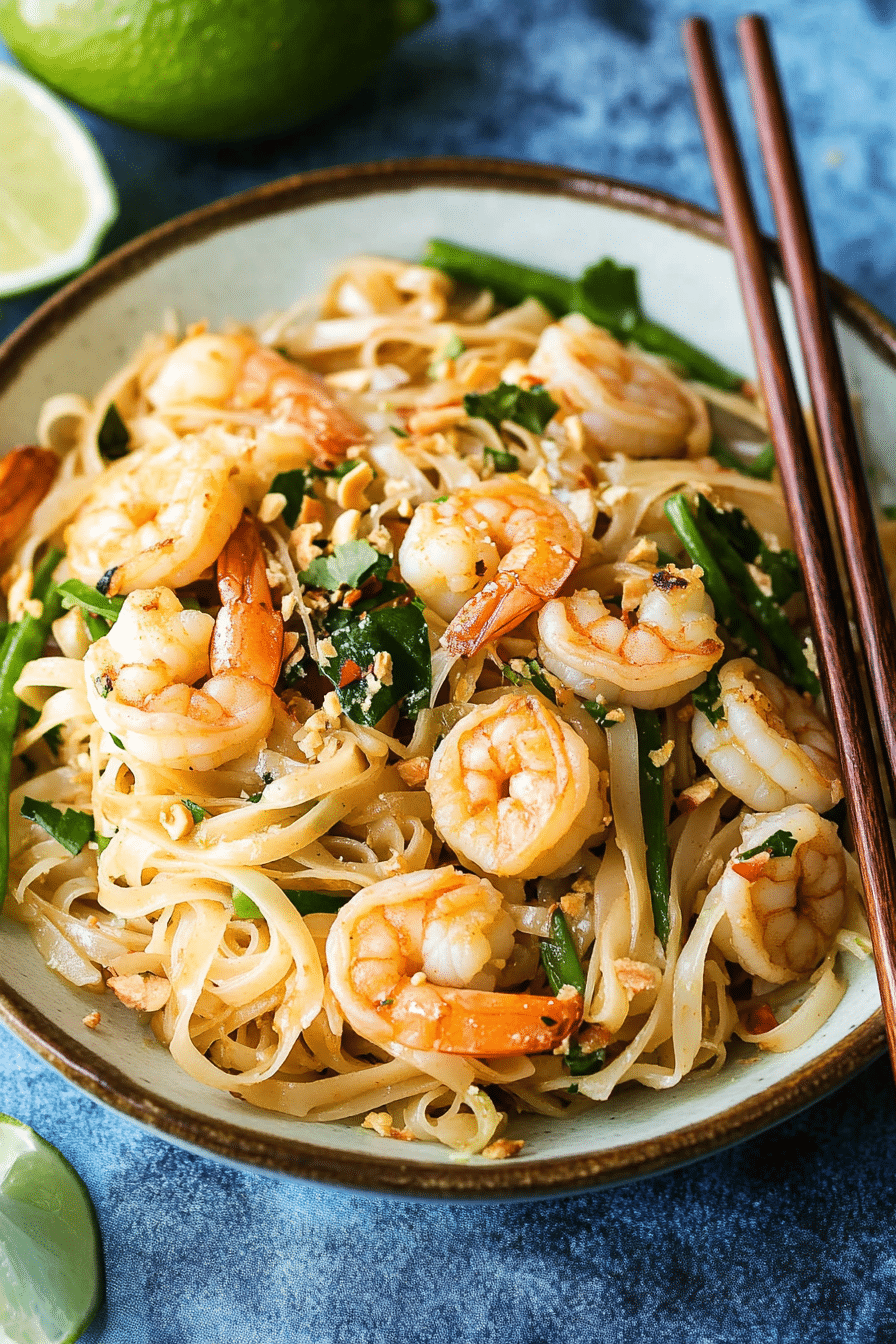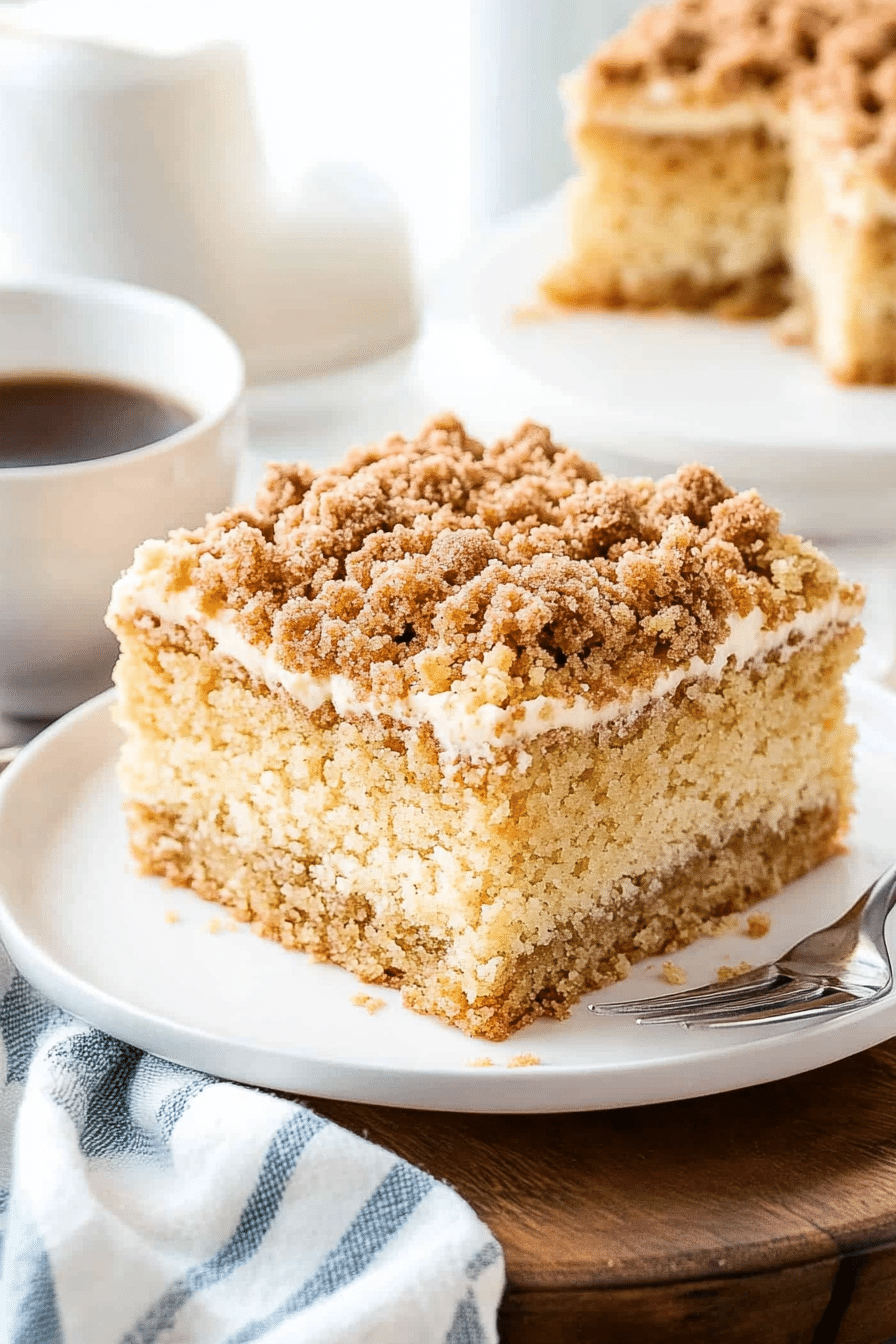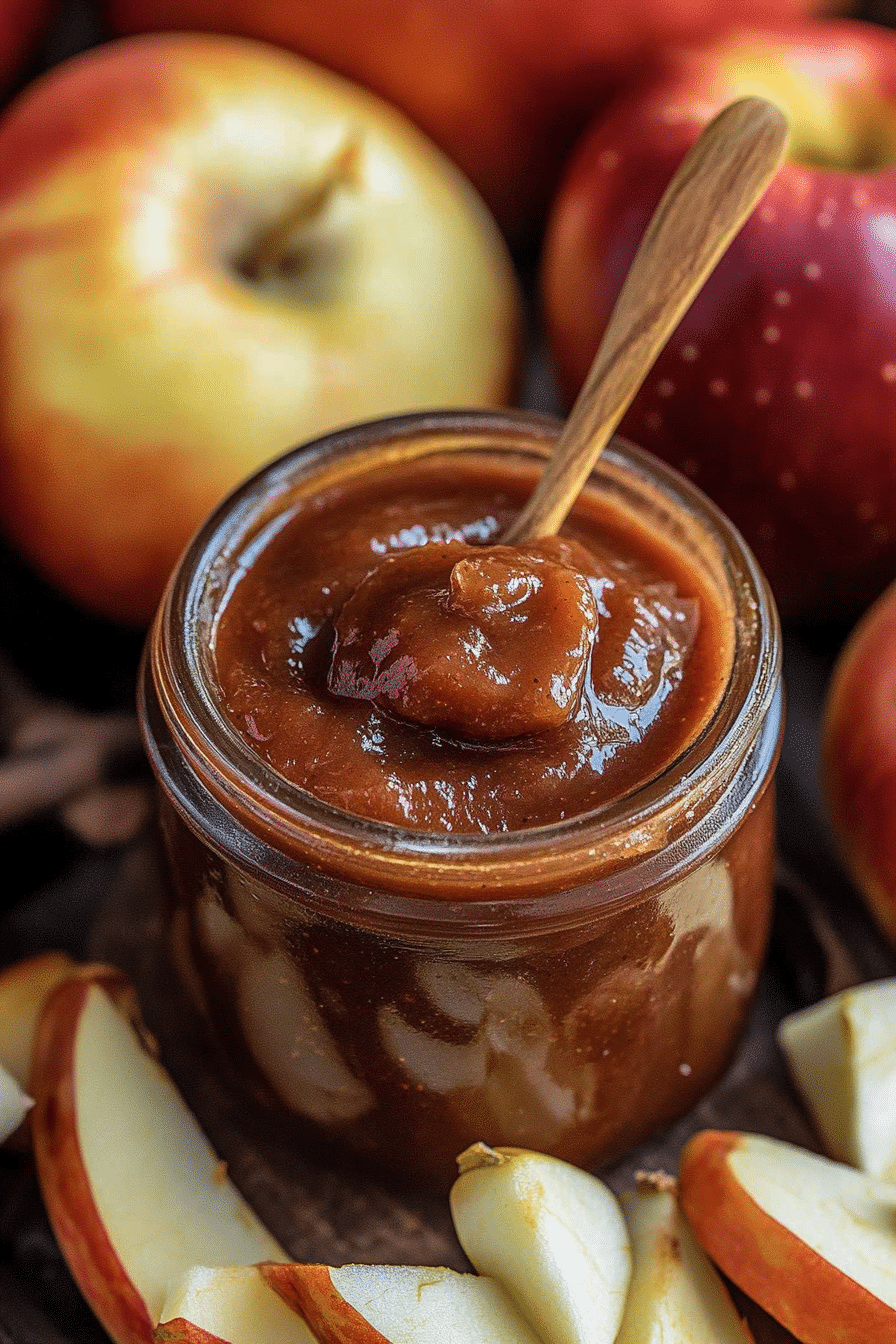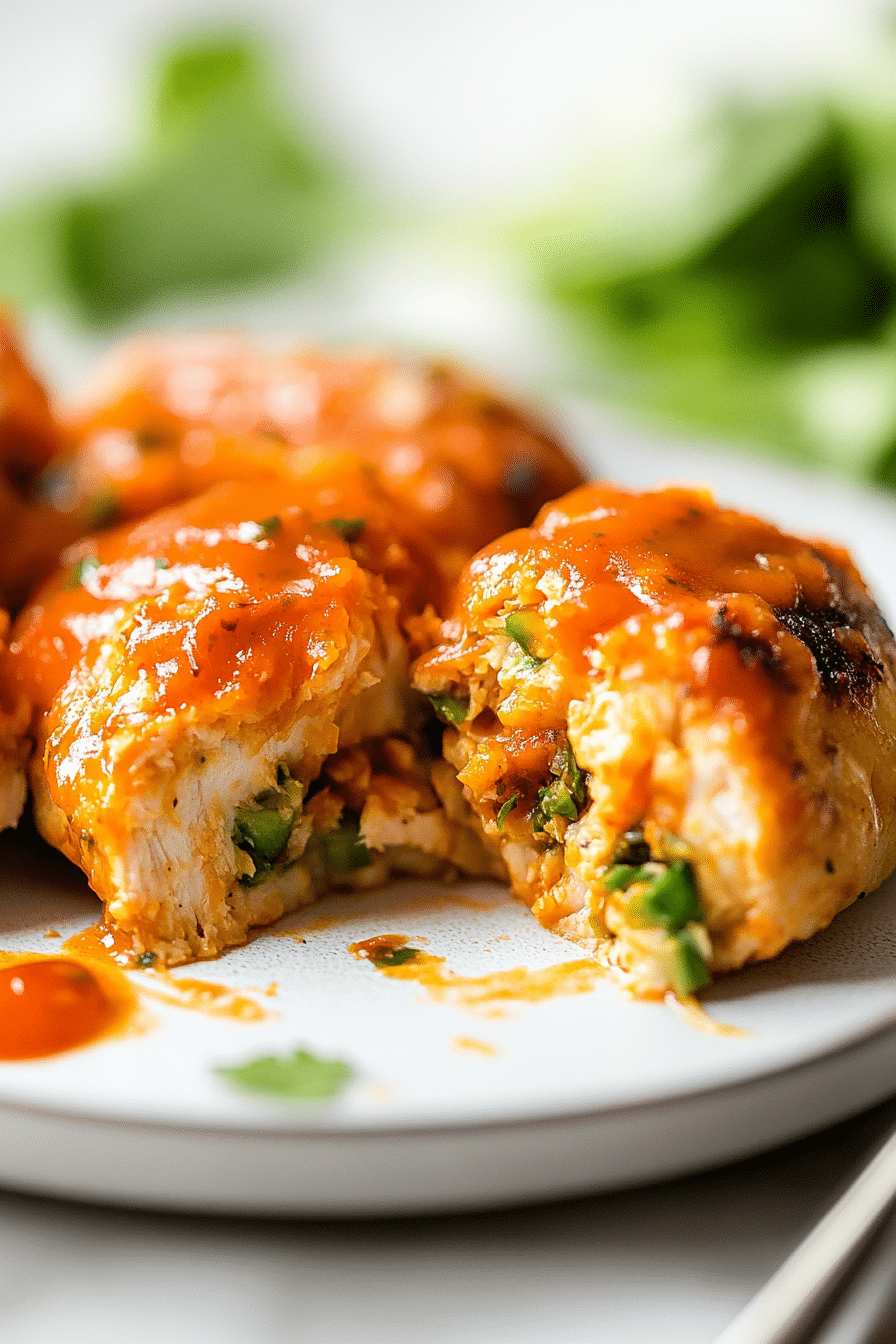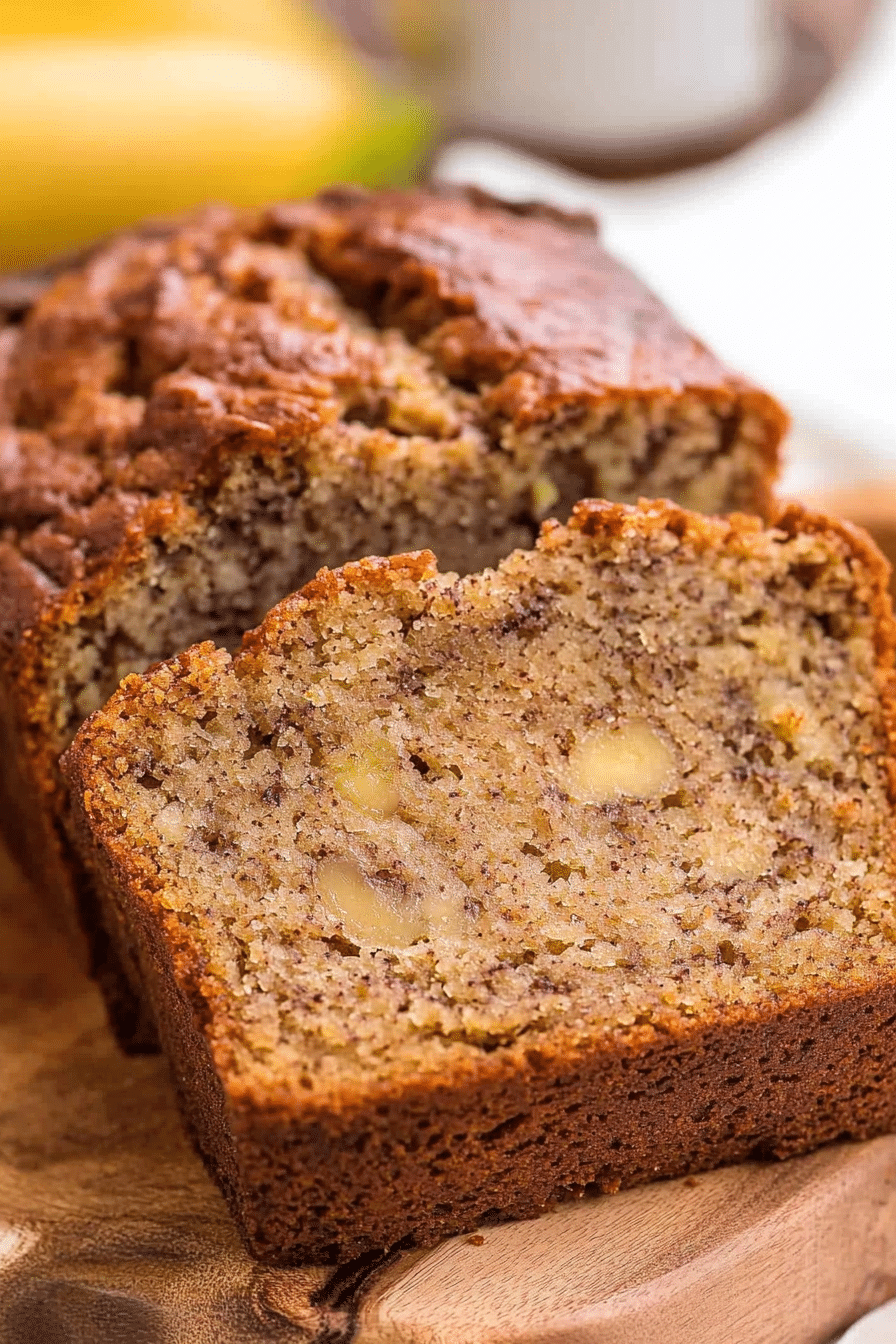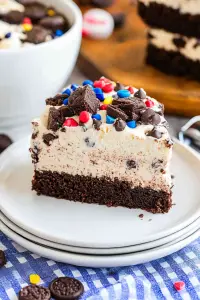Oh, friends, let me tell you about chimichurri sauce. It’s one of those magic little concoctions that can utterly transform a humble piece of Grilled Chicken or a simple steak into something truly spectacular. I remember the first time I tried authentic chimichurri – it was at a little Argentinian steakhouse and the vibrant green sauce, bursting with fresh herbs and a hint of garlic, just danced on my palate. It was nothing like the bland herb dressings I’d encountered before. It was zesty, herbaceous, and just… alive. Since then, it’s become an absolute staple in my kitchen, a true lifesaver on busy nights when I need to jazz up dinner in a flash. Seriously, this chimichurri sauce is so good, it’s almost criminal how easy it is to whip up.
What is Chimichurri Sauce?
So, what exactly *is* this glorious green goodness? At its heart, chimichurri sauce is a vibrant, uncooked sauce that hails from Argentina and Uruguay. Think of it as a South American pesto, but without the nuts and with a much more herbaceous, garlicky, and vinegary punch. It’s traditionally served with grilled meats, especially steak, but honestly, it’s so versatile you’ll find yourself wanting to drizzle it on everything. The name itself is a bit of a mystery, with theories ranging from a mispronunciation of an English name to indigenous words. Whatever its origin, it’s a culinary masterpiece that celebrates the fresh, bright flavors of its ingredients. It’s essentially a harmonious blend of finely chopped parsley, oregano, garlic, olive oil, and vinegar, with a touch of chili for a gentle warmth.
Why you’ll love this recipe?
There are so many reasons why this chimichurri Sauce Recipe has earned a permanent spot on my recipe card and in my heart. Firstly, the flavor is just out of this world. It’s a complex symphony of fresh, herbaceous notes from the parsley and oregano, a zesty tang from the red wine vinegar, and a pungent kick from the garlic. It cuts through rich, fatty meats beautifully, and adds a burst of freshness to even the simplest grilled vegetables. What I love most about this recipe is its incredible simplicity. You don’t need to cook anything; it’s all about fresh ingredients and a good chop. It’s astonishingly budget-friendly too, using pantry staples that most of us already have on hand. I often find myself reaching for it when I have a surplus of fresh parsley from the garden, making it a wonderfully resourceful choice. And its versatility? Unmatched! It’s not just for steak; I use it on chicken, fish, roasted vegetables, as a dip for bread, or even stirred into scrambled eggs. It’s a little jar of magic that can elevate almost any meal. Compared to store-bought versions, this homemade chimichurri sauce has a far superior freshness and vibrancy. You can really taste the difference when the herbs haven’t been sitting on a shelf for weeks.
How do I make Chimichurri Sauce?
Quick Overview
This recipe is all about fresh, vibrant flavors coming together in a flash. You’ll roughly chop your herbs and garlic, then combine them with the liquids and seasonings. The key is to get a nice, rustic chop rather than a paste, which gives the sauce wonderful texture. It’s incredibly forgiving, so don’t stress too much about perfection. The longer it sits, the more the flavors meld, making it even better!
Ingredients
For the Chimichurri Base:
2 cups fresh parsley, packed (stems removed, leaves roughly chopped)
1/2 cup fresh oregano, packed (leaves roughly chopped)
4-6 cloves garlic, minced or finely grated (adjust to your garlic love!)
1/2 cup extra virgin olive oil
1/4 cup red wine vinegar
1 teaspoon Red Pepper flakes (or more, if you like it spicy!)
1 teaspoon sea salt, or to taste
1/2 teaspoon black pepper, freshly ground
Optional additions for flavor variations:
1 tablespoon fresh lemon juice (for extra brightness)
1/2 teaspoon ground cumin (for a smoky depth)
A pinch of dried thyme (if you don’t have fresh oregano)
Step-by-Step Instructions
Step 1: Prep the Herbs and Garlic
This is where the magic starts! First, wash and thoroughly dry your fresh parsley and oregano. You want them to be completely dry so the olive oil and vinegar can emulsify properly and the sauce doesn’t get watery. Remove the tough stems from the parsley – nobody wants stringy bits in their sauce. Then, give both the parsley and oregano a good, rough chop. I prefer a slightly rustic chop rather than a super fine mince, as it gives the chimichurri sauce a lovely texture. For the garlic, you can mince it finely with a knife, use a garlic press, or even grate it on a microplane for a super smooth integration. I find mincing it finely with a sharp knife gives the best balance of flavor without overpowering.
Step 2: Combine Dry Ingredients
In a medium-sized bowl, combine your chopped parsley, chopped oregano, and minced garlic. If you’re using any dried herbs like thyme, add them now too. Give it a gentle stir to distribute everything evenly. This is where you start to get that gorgeous, verdant aroma filling your kitchen – it’s intoxicating!
Step 3: Add the Liquids and Seasonings
Now for the wet ingredients and flavor enhancers. Pour the extra virgin olive oil and red wine vinegar over the herb and garlic mixture. Add the red pepper flakes, sea salt, and freshly ground Black Pepper. If you’re feeling adventurous and want to try some optional additions, this is the time to add them – maybe a squeeze of fresh lemon juice for extra zing or a pinch of cumin for a deeper, earthier note. Trust me, these little tweaks can make a big difference!
Step 4: Mix and Let Flavors Meld
Stir everything together really well. You want to make sure the olive oil and vinegar are fully incorporated with the herbs and garlic. The sauce will look a little separated at first, and that’s totally fine. The beauty of chimichurri sauce is that it gets better the longer it sits, allowing all those wonderful flavors to meld and deepen. I usually like to let it sit for at least 15-20 minutes at room temperature before serving, but honestly, it’s fantastic even if you serve it immediately. If I have time, I’ll make it a few hours ahead and pop it in the fridge.
Step 5: Adjust Seasoning
This is a crucial step! Taste your chimichurri sauce and adjust the salt, pepper, and vinegar as needed. Does it need a little more salt to brighten the flavors? A bit more vinegar for tang? More red pepper flakes for a kick? This is your chance to make it *your* perfect sauce. Remember, the seasoning of the dish you’re serving it with will also play a role, so keep that in mind.
Step 6: Serve or Store
Your delicious chimichurri sauce is ready to be served! Drizzle it generously over grilled meats, Roasted vegetables, or anything your heart desires. If you’re not using it all right away, transfer it to an airtight container.
Step 7: Storing for Later
This sauce keeps beautifully in the refrigerator. I’ll talk more about that in a bit, but for now, just know that it’s a make-ahead marvel.
Step 8: Enjoy!
That’s it! You’ve just made incredible, vibrant chimichurri sauce from scratch. The aroma alone is enough to make you feel like a gourmet chef. Go ahead, pat yourself on the back – you’ve earned it!
What to Serve It With
Oh, the possibilities are endless once you have this chimichurri sauce in your fridge! It’s my go-to for so many meals. For breakfast, I love a little dollop on scrambled eggs or an omelet; it adds a surprising burst of freshness that wakes up the palate. It’s also fantastic with breakfast sausages or even smeared on toast with avocado. When it comes to brunch, it’s an absolute showstopper. Imagine a beautifully grilled steak or chicken skewers served with a generous side of this vibrant sauce – it makes even a casual brunch feel fancy. It pairs wonderfully with roasted potatoes or a fresh green salad. As a dessert accompaniment, well, it’s not exactly a sweet sauce, but I’ve found it to be an intriguing counterpoint to some richer, savory dishes that might be served before dessert, or even as part of a cheese board. For those cozy, no-fuss nights, it’s a lifesaver. I’ll grill up some chicken breasts or pork chops, whip up this chimichurri sauce, and dinner is done. It’s also incredible on burgers, fish tacos, or even as a dip for roasted vegetables like broccoli or cauliflower. My family absolutely devours it with grilled steak – it’s a weekend tradition for us. I also love serving it with grilled shrimp or even as a dressing for a hearty quinoa salad. It’s just one of those things that makes everything taste better!
Top Tips for Perfecting Your Chimichurri Sauce
Over the years, I’ve learned a few tricks that really help make this chimichurri sauce sing. First, the quality of your ingredients really matters, especially the olive oil and vinegar. Use a good quality extra virgin olive oil – it makes a noticeable difference in flavor. And don’t shy away from good red wine vinegar; it has a lovely tang that’s essential here. My biggest tip for achieving the best texture is about how you chop your herbs. While a food processor can work, I find that a sharp knife gives you more control over the chop. You want those lovely little flecks of herbs and garlic, not a paste. If you do use a food processor, pulse it gently and avoid over-processing. When it comes to the garlic, I always recommend mincing it very finely or even grating it on a microplane. This ensures the garlic flavor is distributed evenly and doesn’t leave you with harsh raw garlic bites. Another thing I’ve learned is that the ratio of oil to vinegar is a personal preference. Some people like it tangier, some prefer it richer. Don’t be afraid to adjust it to your liking after you’ve made the initial batch. My kids actually prefer it with a little less vinegar, so I often make a slightly milder batch for them. The red pepper flakes are also key for that little whisper of heat. If you’re sensitive to spice, start with a smaller pinch or even omit them, but a little bit really does add a wonderful dimension. I’ve accidentally made batches too mild by forgetting the flakes, and it just wasn’t the same! For an extra layer of flavor, consider using a mix of parsley and cilantro if you’re a cilantro fan, though traditionalists stick to parsley and oregano. I once tried adding a bit of finely chopped shallot instead of some of the garlic, and it was surprisingly delicious – a bit more mellow and sweet. Baking is also a great way to use it! I’ll brush it over chicken or fish before popping it in the oven, or stir it into marinades. Remember to taste and adjust as you go; that’s the best way to learn what works for your palate. This sauce is also fantastic for soaking up extra moisture if you’re grilling very lean meats – it adds flavor and keeps them from drying out. If you find your sauce is a bit too thick after sitting in the fridge, just stir in a tiny bit more olive oil or a splash of vinegar to loosen it up.
Storing and Reheating Tips
One of the best things about this chimichurri sauce is how well it stores. You can keep it in an airtight container in the refrigerator for up to a week, sometimes even longer. The flavors actually get better and meld together more beautifully over time, so making it a day in advance is actually ideal! For room temperature storage, it’s best to keep it refrigerated if you’re not using it immediately, especially if you’ve used fresh garlic. I typically don’t leave it out for more than an hour or two. If you plan to store it for longer than a week, or if you just want to have some on hand for future cravings, freezing is an option. You can freeze it in small ice cube trays; once frozen, pop the cubes out and store them in a freezer-safe bag. This way, you can thaw out just what you need. When it comes to reheating, there’s usually no need! It’s meant to be served at room temperature or slightly chilled. If it has been refrigerated and has firmed up a bit, just let it sit out for about 10-15 minutes to come to room temperature, or give it a quick stir. If you’ve frozen it, let the cubes thaw overnight in the refrigerator. If you’ve used it on something that needs reheating, like grilled steak, you can gently warm the sauce *separately* in a small saucepan over very low heat, but be careful not to cook it, as it will lose its fresh vibrant flavor. I usually just spoon the thawed or room-temperature sauce over the hot food.
Frequently Asked Questions
Final Thoughts
So there you have it, my friends! This chimichurri sauce recipe is more than just a recipe; it’s a little jar of pure, unadulterated flavor that I hope brings as much joy to your kitchen as it does to mine. It’s proof that sometimes, the simplest things – fresh herbs, good oil, a splash of vinegar – can create something truly magical. It’s that perfect balance of zesty, herby, and a little bit spicy that just makes everything taste better. It’s one of those recipes that’s so forgiving and so rewarding, you’ll wonder why you ever bought it from a jar. If you love this vibrant, fresh flavor profile, you might also enjoy my recipe for a bright and zesty salsa verde, or perhaps a simple lemon herb marinade for chicken. They share that same love for fresh ingredients and big flavor. I truly can’t wait to hear how your chimichurri sauce turns out. Let me know in the comments below if you tried it, what you served it with, or any fun variations you came up with! Happy cooking!

Chimichurri sauce
Ingredients
Main Ingredients
- 0.5 cup red wine vinegar
- 1 cup fresh parsley finely chopped
- 0.5 cup fresh cilantro chopped, optional
- 0.5 cup extra-virgin olive oil
- 6 cloves garlic minced
- 1 teaspoon crushed red pepper flakes
- 1 teaspoon dried oregano
- 1 teaspoon salt
- 0.5 teaspoon black pepper freshly ground
Instructions
Preparation Steps
- In a large bowl, whisk together the red wine vinegar and olive oil.
- Add the chopped parsley, cilantro, minced garlic, red pepper flakes, oregano, salt, and black pepper.
- Stir well to combine all ingredients thoroughly.
- Let the sauce sit for at least 10 minutes to allow the flavors to meld. For best results, let it rest for 1 hour at room temperature or refrigerate for longer storage.
- Taste and adjust seasoning if needed before serving. Serve over grilled steak, chicken, fish, or roasted vegetables.
Notes
Featured Comments
“Impressed! Clear steps and family favorite results. Perfect for busy nights.”
“New favorite here — turned out amazing. crowd-pleaser was spot on.”
“Super easy and turned out amazing! My family asked for seconds. Saving this one.”
“This sweet treat was absolutely loved — the fresh really stands out. Thanks!”
“Made it tonight and wow — crowd-pleaser! Will definitely make Chimichurri sauce again.”
“Packed with flavor and so simple. Exactly what I wanted from Chimichurri sauce.”




